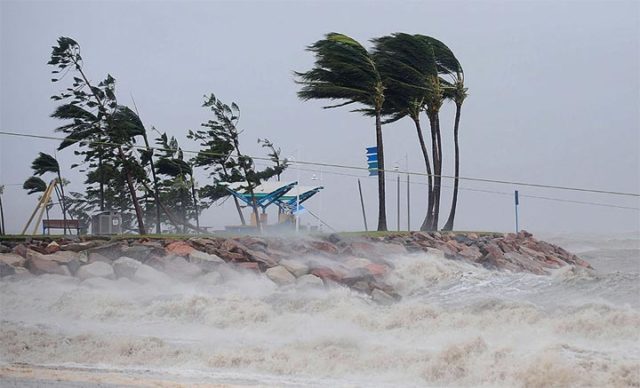The National Oceanic and Atmospheric Administration (NOAA) adverts the formation of a tropical depression very close to the Caribbean coast of Panama with an 80% chance of becoming a hurricane. There is a 90% probability of the formation of a cyclone, in less than 48 hours, very close to the Caribbean coast of Panama. Satellite imagery and surface observations indicate that a large area of low pressure has formed over the South-Western Caribbean. The environmental conditions seem to be oriented to the development of this system, which could evolve towards a tropical depression and later Hurricane in the next days.
The low-pressure system off the Panamanian Caribbean coastline already has a vorticity or rotation edge, and could even enter the next 72 hours inland. If it evolves into a tropical storm, it would be called Nate or Ophelia.
Taking precautions for winds of more than 120 kilometers per hour. It is also recommended to protect houses and evacuation in the coasts from Darien to the Coast of Costa Rica. In this sense, winds will reach the Panamanian Pacific side, from Las Perlas Archipelago to Punta Burica.
Civil Protection (CP) strongly recommended take precautions: do not make long trips and, if no choice, drive very carefully along main roads or highways; save enough water bottles and dry food supplies; have a first aid kit at hand, and avoid being under unstable constructions such as old houses or buildings.
Boats near the Panama Canal at both ends remain anchored or deviated. Torrential rains are expected with winds up to 120 kilometers per hour, for 72 continuous hours.
Why are hurricanes so dangerous?
The first greatest threat from a hurricane comes from storm surges. They are responsible for about half of all deaths from hurricanes. Storm surges are produced by the force of a hurricane’s winds pushing water toward the shore.

A storm’s winds can cause an abnormally large rise in the water level, which can destroy buildings, bridges, and roads; sweep people away, and cause damaging erosion to beaches and dunes. To get an idea of their incredible power, storm surges produced by Hurricane Katrina alone in 2005 contributed -directly and indirectly- to at least 15,000 deaths.
The second deadliest effect of a tropical cyclone is flooding, which is especially dangerous for people living inland. Storms can produce torrential rains of more than 6 inches and can cause a rapid rise in water levels quickly during a flash flood.
Rainfall is not directly related to the strength of a hurricane, but to the speed and size of the storm, as well as an area’s geography. “Slower moving and larger storms produce more rainfall,” the National Hurricane Center reports. In addition, mountainous terrain enhances rainfall from a tropical cyclone.
